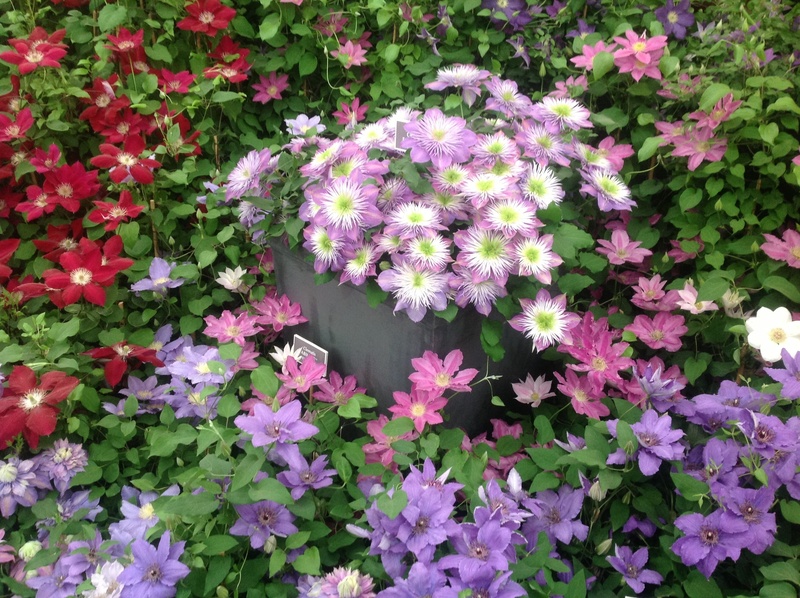Preparing Your Vegetable Garden for Fall Plantings in the Summer
Posted on 18/09/2024

Preparing Your Vegetable Garden for Fall Plantings in the Summer
When it comes to gardening, summer and fall can often feel like polar opposites. With temperatures rising and days growing shorter, it can seem like prepping your vegetable garden for autumn plantings is an impossible task. But while it may require a little more effort than normal, getting your veggie patch ready for seasonal change is well worth the extra effort. Here, we'll discuss some of the methods you should use to prepare your vegetable garden for fall plantings this summer.
Start Early
The key to a successful vegetable garden in both summer and fall is starting early. In the case of autumn harvest vegetables, that means you need to start planning and preparing in mid- to late-summer. As soon as your late July and August harvests start to come in, begin making room for new crops that will thrive in cooler weather.
Clear Out Old Crops
This is the time to clear out all old plants and weeds from the soil before giving your garden a good cleaning and aerating. We also recommend adding a layer of compost before moving on to planting your fall vegetables. This compost loosens up hard soil, increasing drainage and enabling better access for root systems.
Choose Cold-Weather Varieties
Your selection of colder-weather vegetables will be limited compared to those available in spring or summer, but there are plenty of options that will do well during autumn months. Examples include leafy greens like kale or collards; radishes; bitter greens like mustard or turnips; Asian cabbage varieties; root vegetables such as parsnips or carrots; and winter squashes like butternut or acorn squash. Be sure to check your local nurseries or seed catalogs so you can pick up what you need for planting now while they're still available.
Time Plantings Right
There are two main types of cold-weather vegetables: those that are planted in late summer (such as lettuces) and those planted in early fall (like cauliflower). Pay close attention to the timing recommendations included with each type of seed packet you purchase. For example, if you're planting lettuce seeds in July, they should be ready for harvesting by October-December. If you wait until September for planting, then harvest won't be until March/April, so plan accordingly depending on what you need (and want) from your garden!
Select Space Wisely
Since cold-weather vegetables take longer to mature than warm-weather ones, you should plan space accordingly when planting them side by side. Make sure there's plenty of room between each row so that air circulation is optimal--this will help keep any pests away from your plants while also ensuring enough sunlight will reach them throughout their growing process. You may also want to consider investing in season-extension technologies such as floating row covers or cold frames (a mini greenhouse) that will help protect your plants from extreme weather scenarios like frost or windburn damage during the winter seasons ahead!
Protect Plants From Frost Damage
When colder weather arrives, be prepared by wrapping plants--especially fragile ones like tomatoes--in blankets or plastic sheeting overnight if needed. This simple tactic helps raise the air temperature around delicate foliage enough to prevent temperatures from reaching freezing levels and killing off potentially vulnerable vegetation prematurely! Additionally, many vegetables aren't affected by frost and can even benefit from it; thus protecting them from frost damage isn't always necessary if they appear hardy enough on their own accord.
Harvest Carefully
When autumn arrives and it's time to start harvesting produce from your garden beds again, take care not to overharvest any one vegetable at once--this will leave roots intact which allows growth potential next season! Many veggies are best harvested every few days over a prolonged period rather than all at once, so pay attention to instructions included with each seed packet found at nurseries and/or online retailers when planning out a harvest schedule for optimal results year round!
By following these tips on preparing your vegetable garden for fall plantings this summer, you shouldn't have any trouble having a successful garden full of delicious vegetables late into the season when everybody else has given up! Whether you're looking forward to crunchy radishes or sweet winter squash this autumn, spending time on proper prep work prior can give you more rewards than ever imagined!


